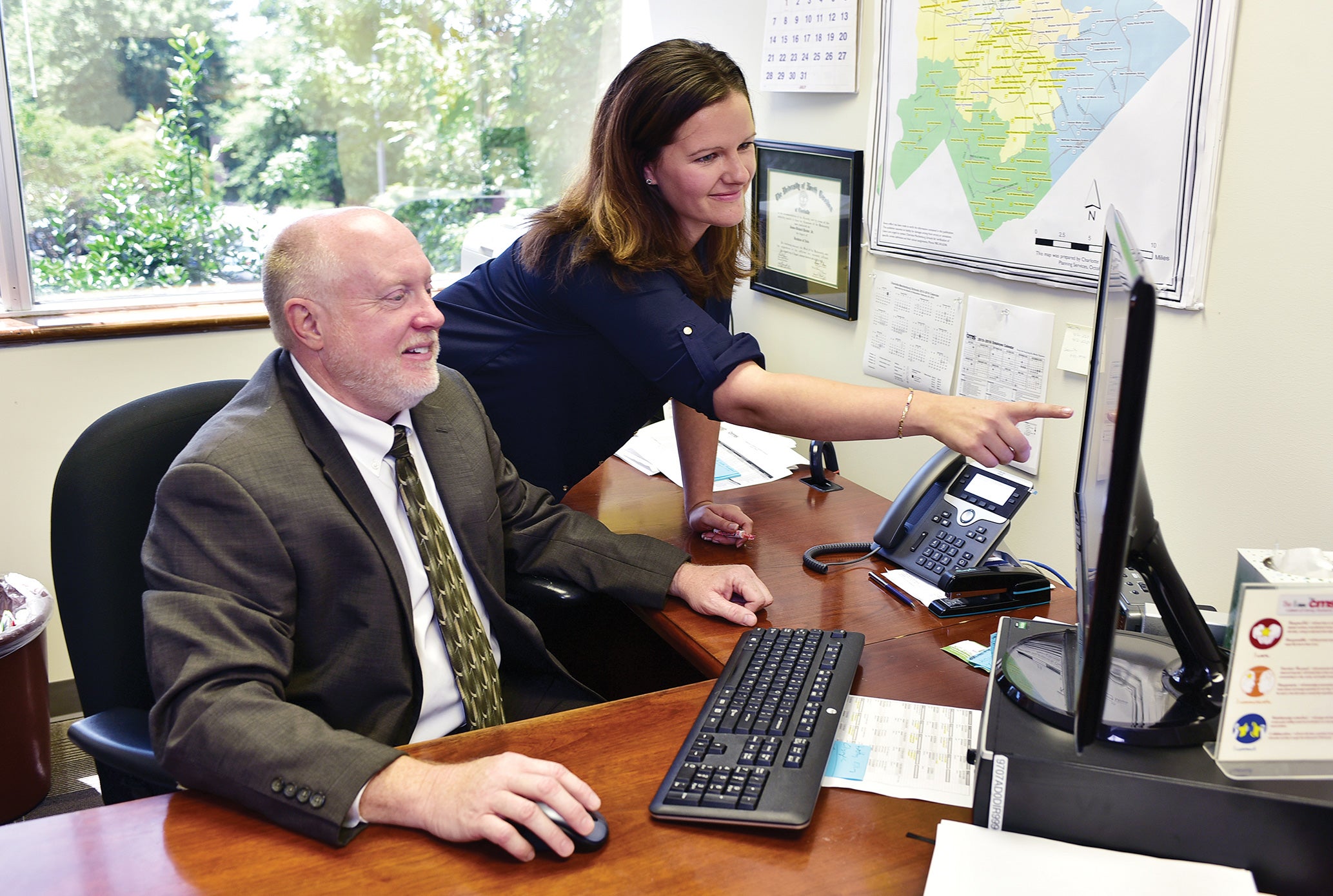Nonprofit organizations face unprecedented financial challenges because of the COVID-19 pandemic. With nationwide restrictions on public gatherings, theatres have gone dark, schools and afterschool programs have shuttered their doors indefinitely, and spring galas, often the biggest fundraiser of the year for many nonprofits, have been canceled. Hilda Polanco is the CEO of Fiscal Management Associates, a national capacity-building firm that advises nonprofits on strategic financial management. Her organization helped develop much of the content for a Wallace-supported website—strongnonprofits.org—providing free guidance on nonprofit financial management. Recently, Polanco discussed how organizations can best assess and work to maintain their financial health in such uncertain times. The interview has been lightly edited for length and clarity. Also, watch FMA's recent webinar, Navigating COVID-19 for nonprofits.
What should nonprofits be doing right now to weather the current crisis?
They should be taking three steps:
- Understand your financial position in terms of net assets and liquidity;
- Identify implications on revenue and expenses;
- And finally, manage your cash flow.
 Net assets are those you’ve accumulated and that are available for current and future operations. Look at what you own and how quickly you can make them liquid and flexible. Net assets may come with or without restrictions. You may also have board-designated funds that have accumulated over time. What is the purpose of those funds—would the board be willing to redirect them? A nonprofit might also have liquid unrestricted net assets, or LUNA, which are available and have no specific earmark. A calculator on strongnonprofits.org can help you determine your LUNA balance and how many months’ worth of operating expenses it will cover. Nonprofits may also have temporarily restricted assets, such as grants from funders. It is important to understand the funder expectations around these restricted funds and assess whether you are in a position to meet these expectations. If you aren’t, speak to your funder and explore possibilities around releasing or loosening these expectations, in order to make these available for ongoing operations.
Net assets are those you’ve accumulated and that are available for current and future operations. Look at what you own and how quickly you can make them liquid and flexible. Net assets may come with or without restrictions. You may also have board-designated funds that have accumulated over time. What is the purpose of those funds—would the board be willing to redirect them? A nonprofit might also have liquid unrestricted net assets, or LUNA, which are available and have no specific earmark. A calculator on strongnonprofits.org can help you determine your LUNA balance and how many months’ worth of operating expenses it will cover. Nonprofits may also have temporarily restricted assets, such as grants from funders. It is important to understand the funder expectations around these restricted funds and assess whether you are in a position to meet these expectations. If you aren’t, speak to your funder and explore possibilities around releasing or loosening these expectations, in order to make these available for ongoing operations.
How can nonprofits deal with uncertainty in revenue?
Nonprofits have two significant sources of revenue: contributed, such as donations from individuals and corporations, and earned, such as program service fees. Regarding contributed revenue, this is the time to turn to relationships with existing donors. In addition to releasing restrictions on current grants, some foundations are considering reserve grants to replenish resources that nonprofits are draining right now. In addition, emergency relief funds are starting to come through, both from government-funded stimulus packages and philanthropic efforts. A summary of emergency funds across the country can be found here. It is extremely critical that leaders stay aware of these funds in their communities. Lastly, engage your community through new fundraising strategies, like crowd-source funding. People want to help even if the events aren’t there.
Your organization may also have some earned revenue potential right now. Do you have a valuable product for this new operating environment? For example, organizations that have been delivering programming online are at a competitive advantage right now. Maybe they can offer their online learning product to other organizations that need this capacity in order to meet their mission.
Create best, moderate and worst case scenarios based on likely revenue and compare each one to projected expenses. This scenario planning tool can get you started.
What are the implications on expenses?
When reviewing expenses, group them into three categories: fixed, variable and semi-variable. Thinking of them in this way will help you make decisions. Take a look at variable expenses first because they’re the ones based on particular programming, which might be reduced if programming is reduced. Semi-variable expenses are ones that you can’t totally do without, but you might be able to curtail, such as utilities. Expenses like rent and insurance are fixed because they’re incurred regardless of programming. Still, you might be able to work with your landlord on rent. Banks have deferred mortgage payments for 90 days, so keep that in mind when you’re negotiating.
Workforce-related expenses make up 70 to 80 percent of most organizations’ budgets. The two most critical are salaries and related benefits. Reviewing salaries also means reviewing any accrued paid-time-off that may be due employees. Which are your core operations that must remain at this time? Can staff be redeployed to where current core operations require? If given the option, would certain team members opt for less than full time schedules? This Harvard Business Review article suggests alternative to deep layoffs.
As you weigh your options, explore federal and state programs that can help maintain your current workforce; what is your state’s department of labor unemployment program at this time? Keep in mind, too, that there’s life after the crisis. Think strategically about retaining capacity. And, as you make these difficult decisions, I urge you to apply an equity lens.
How can a nonprofit better manage cash flow in such difficult times?
The ebb and flow of your cash flow will tell you when you’ll need to draw on your reserves or when you need to start planning for contingencies. Develop cash projections for the week, month and quarter (the template on strongnonprofits.org can help). Look closely at each of your revenue sources to understand which ones might be at risk. Delay non-essential payments and ask vendors you owe if they’re open to revisiting payment terms. Review your accounts receivable but understand that these balances may be slower to pay. You may also want to approach funders about accelerating grant payments.
Financing is another option. If you have a credit line, now may be the time to use it. The Small Business Administration is making loans available to nonprofits [find the federal agency’s information on disaster assistance in response to the pandemic here]; some foundations are considering bridge loans; and there are also low-interest loans from community development financial institutions. My word of caution is that this is debt. You have to understand how you’re going to pay it back, as part of the decision to draw on this debt.
If it looks like an organization must choose among difficult financial options, whom should decision-makers consult for a clear-headed picture of considerations and trade-offs? Board members might be one source, but are there others?
Speak to your funders, especially those who are trusted long-time partners and want to help. Many foundations have told me they’re reaching out to grantees to understand their needs. Still, there may be some funders who haven’t had a chance to do that yet but want to be a thought partner for you.
When you do reach out, be as clear as you can as to your current financial situation, and where you feel your risks will be. I did a webinar recently and a funder asked, I have limited resources. I have many grantees whose reserves have been eroded. How do I best decide how to respond? As hard as I know this is for all nonprofit leaders, my response focused on gaining clarity as to the grantee’s current position. It’s important that the grantee has a sense of where it is financially, and what it needs to turn the corner. In writing those additional checks, funders want to understand your plan as part of investing those dollars.
Another source of support might be other leaders in your community. Peer exchange is often a powerful source of ideas. If you’re a member of an association or advocacy group, now’s the time to get together and hear what other nonprofits are doing and learning.
Managing through a crisis is stressful. Are there any positive aspects? Can a nonprofit emerge stronger?
The sudden push to working from home is helping organizations prioritize automation and technology, which is a great first step toward more efficient financial operations.
Leaders coming together to make difficult decisions creates a stronger team, a team that’s looking to a successful outcome for the whole organization. For organizations that have drifted from their mission and have found themselves delivering services outside of their core, this may be the jolt that might make them ask: What is our real core and how do we do that the best? It’s a time for recognizing that, in certain cases, rather than delivering a particular service or program, maybe they should be strengthening partnerships with other groups in the sector to carry it out.
I also hope this is an opportunity for nonprofits to strengthen relationships with long-term funders, and for funders to identify ways to support nonprofits from an enterprise perspective, rather than one program at a time.




